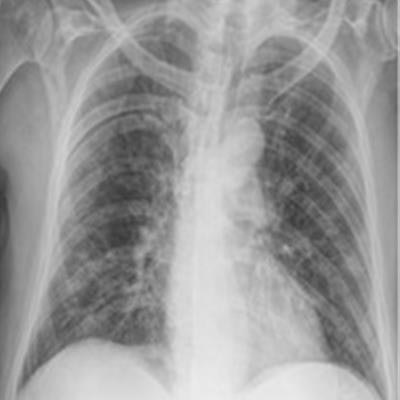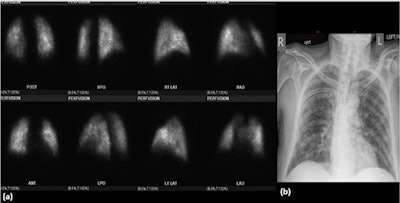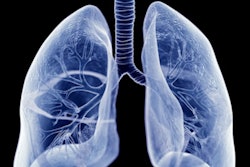
Nuclear medicine ventilation/perfusion scintigraphy (V/Q) dropped significantly during the COVID-19 pandemic, as hospitals took up new protocols to reduce the chances of infections, according to an abstract presented at the American Roentgen Ray Society (ARRS) meeting in New Orleans.
V/Q lung scans are traditionally used to assess pulmonary embolism, or blood clots in the lungs. Early on in the COVID-19 pandemic, however, the Society for Nuclear Medicine and Molecular Imaging published guidance that discouraged the use of ventilation on lung scans to reduce potential transmission of the virus. This led many hospitals to switch to perfusion-only protocols.
In the study presented at ARRS 2022, Dr. Pokhra Suthar, a nuclear medicine fellow at Rush University Medical Center in Chicago, and colleagues retrospectively compared lung perfusion scintigraphy during the COVID-19 pandemic (April 2020 to July 2021) with V/Q scans performed during the immediate pre-COVID era (December 2018 to March 2020) at their tertiary care teaching hospital.
 A 76-year-old patient positive for COVID-19. (A) Lung perfusion scintigraphy shows near-homogeneous tracer distribution in both lungs. No distinct segmental perfusion defect is noted. The case was classified as a low-probability scan for pulmonary embolism. (B) Chest radiograph shows patchy ground-glass opacities of both lungs in peripheral distribution.
A 76-year-old patient positive for COVID-19. (A) Lung perfusion scintigraphy shows near-homogeneous tracer distribution in both lungs. No distinct segmental perfusion defect is noted. The case was classified as a low-probability scan for pulmonary embolism. (B) Chest radiograph shows patchy ground-glass opacities of both lungs in peripheral distribution.As expected, the study authors found a 30% drop (154 fewer lung scans, 357 total) in the overall number of lung scans performed during the COVID-19 pandemic, compared with the pre-COVID era, when 511 V/Q scans were performed, according to the findings.
In addition, the researchers compared the probability of scintigraphy scans in terms of low, intermediate, and high probability based on modified PIOPED II and perfusion-only modified PIOPED II criteria.
Out of 511 patients who underwent a V/Q scan during the pre-COVID-19 period, 349 (68.3%) had low, 142 (27.8%) had intermediate, and 20 (3.9%) had high probability scans for pulmonary embolism (PE).
Out of 347 patients who underwent lung perfusion scintigraphy during the COVID-19 pandemic, 199 (57.3%) had low, 114 (32.9%) had indeterminate scans, and 34 (9.8%) had high probability scans for PE.





















